Yet Another Reason Paying Interest on Fed Reserves Stinks
I think it’s safe to say that the standard economist take on the Fed paying interest on reserves is that it was a tool to (try to) keep the federal funds rate from sinking. The Fed had flooded the market with tons of new reserves (see my new favorite chart below), and so naturally the interest rate on overnight loans of these reserves would sink. Thus, Bernanke may have thought that he could achieve both of his objectives–(1) buy up dubious assets and (2) peg the federal funds rate–if he started paying interest on reserves.
If that was in fact Bernanke’s plan, it obviously didn’t work. (Robert Wenzel points out that one problem is that the GSEs are still able to lend reserves in the federal funds market, but they’re not allowed to earn interest from the Fed. So they would lend them out.)
Tyler Cowen links to this interesting Interfluidity post that discusses a different aspect I hadn’t even considered:
Interest rates are, for the moment, excruciatingly low. But a subsidy to the banking system, once put into place, will be quite hard to dislodge. So, let’s imagine that the Fed will pay interest on bank reserves in perpetuity, that it will pay such interest at or near the risk-free short-term interest rate, and that the expansion of the Fed’s balance sheet is more or less permanent. How large a subsidy to the banking system do the interest payments on reserves represent? Some problems are arithmetically challenging, but not this one. The present value of a perpetual stream of market-rate interest payments is precisely the amount of the principal. Therefore, the present value of the Fed’s de facto commitment to pay interest to banks on $800B of freshly created reserves is $800B. We fought and wailed and gnashed our teeth over potentially overpaying for TARP assets. Meanwhile, we are quietly allowing the Fed give away, as a direct, literal subsidy, more than the entire $700B that Paulson was allowed to play with. Note there is no question about this being an “investment”: The interest payments that the Fed is now making to banks on its suddenly expanded balance sheet are not loans. The banks owe taxpayers absolutely nothing in return for this windfall.
Now we can quibble about the calculation. What the guy (?) means is that the higher the interest rate the Fed pays, you’d think the greater the subsidy. But not if we take the interest rate to be “the” interest rate. A dollar the Fed pays to the banks next year isn’t the same as a dollar today, and so if you discount future payments at the same rate of interest at which the initial principal is rolling over, then the present value of that entire future stream of interest is exactly equal to the original principal.
For what it’s worth, it wouldn’t surprise me if the Fed discontinues interest payments once inflation gets out of control. But then again, if the banks are still on a morphine drip (which they will be–just look at housing projects), then maybe it will be too painful to contemplate.
Last point: Even more than the mysterious open market operations, in which the Fed buys an asset (such as a government bond) from a bank and then credits its account with more reserves, here the Fed quite openly is “creating money out of thin air.” Perhaps the actual mechanism is more subtle than this, but my understanding right now is that if you are a bank and have $1 million on deposit with the Fed, they pay you interest simply by changing the number in their records. No need to debit this payment from some other fund, no need to get Congressional approval, no need to float bonds to raise the money for it. You need to pay out a million dollars in reserves today? Go right ahead, just change the 1s and 0s in the computer.
I think it’s starting to sink in with people, even members of Congress, how powerful the Fed really is. I’m still pretty sure Bernanke is mostly an academic, and he’s trying to do what he can in an admittedly impossible situation. The only real deceit I think coming from Bernanke is his acting like he knows what the hell he’s doing.
But what happens when a real schemer runs the Fed? Do you realize that the Fed chairman effectively has a printing press at his command? Can you imagine the outcry if one sheik controlled the entire world’s supply of oil? Well the Fed chair controls the world’s supply of dollars.
Total Costs of Bailouts So Far…
This Slate piece tallies them up. In terms of commitments (not actual money going out the door), the government had promised, as of Nov. 25, $5.6 trillion in new handouts, er, measures to revitalize the economy. (I think it starts with the Term Auction Facility from the end of 2007.) To put it in perspective, I heard on the radio that a Bloomberg story had found that this was more than all of the United States major wars (and it included Afghanistan), even when adjusting for inflation.
Now remember back when they first bailed out Fannie and Freddie (and then especially AIG), and all of the bad things that certain economists were predicting? Do you think at that point, if we knew for sure that it would lead to an outpouring of almost $6 trillion in new commitments in just a few months, that they would have said, “Let them go bankrupt and let the chips fall where they may”?
Obama Raises Target to 3 Million New Jobs
This job creation stuff is really getting absurd. Now the President-Elect and his partner in crime are saying they will create 3 million jobs, not the 2.5 million they promised earlier, because (according to Biden) the economy is in worse shape than they originally realized.
The CNBC article doesn’t say how much more it will cost to save 3 million jobs versus 2.5 million; such specificity isn’t even appropriate in an announcement like this, because no one actually thinks there are serious calculations involved when politicians throw numbers around. (And wouldn’t it stink if you were the 3,000,001st person to get laid off?)
But let’s use the numbers that some people are throwing around for the total stimulus package. The article mentions three possible numbers: $600 billion, $700 billion, or “in the trillion-dollar range.” Dividing by 3 million, the cost per job saved is:
(B) $233,333.33
(C) $333,333.33
I think instead of Obama’s current plan, what he should do is this: Take the lowball estimate of $600 billion. Next, identify the 10 million Americans who are most in need of immediate assistance. Then, send each of them a tax-free cash payout (split up over twelve months if you doubt their discipline) of $60,000.
I’m guessing that $60 grand after-tax is a lot more than most of these people are used to making, and it’s not bad to get that while you are still eligible to go get a job in the private sector. Notice that my plan is the low-ball cost estimate, and saves 4x as many unemployed people as Obama’s original plan. Plus, my plan is guaranteed to actually “work,” in the sense of saving families who are on the verge of foreclosure etc. (In other words there’s no guarantee that Obama’s job training plans etc. will get these people a job that pays them $60 grand after taxes, especially not right away.)
Obviously, my plan is stupid. It would simply ensure that the unemployment rate stays high for a year, and then we’d be back to square one. At the same time, it would take $600 billion from taxpayers and hand it out to people who aren’t working. (If you want to help such people, charities and churches are happy to take your donations.) But my point is that my plan is better than Obama’s, even on his own terms.
Now ask yourself: Have Obama and his team just not realized the above? Or is it just possible that they want to spend a trillion dollars to reward their own pals, just like Paulson & Co. did with their own set of cronies?
Epstein Hearts Callahan
Gene Epstein places Gene Callahan’s Economics for Real People (book or pdf) at the top of his holiday list. (In the box it’s third in the list, but Epstein discusses it first.) It really is the best intro to Austrian economics available; I used it as a textbook in my Austrian I class at Hillsdale.
Sadly, the best economics book ever didn’t make the cut this year. What’s odd is that Thomas Sowell’s book Applied Economics is on there, when–as all who read my Wikipedia page know–in his review of my book and Sowell’s previous one, Epstein declared:
I only wish Sowell [in Basic Economics] were as informed about the economics of the Austrian school as author Robert Murphy. While Basic Economics and The Politically Incorrect Guide to Capitalism work well as companion volumes, in the few cases where they seem to disagree—as in the discussion of money and business cycles—Murphy’s version is the more trustworthy.
Hmm, something tells me that in this festive time of year, I should rejoice in Gene’s success and not pout about the injustices I endure daily. Maybe…
I’ve Found an Even Better Alter Ego
…or is it doppelganger? Anyway, for a while I’ve been amused by the Robert Murphy who is a left-leaning historian of economic thought in Boston. However, his middle initial is different from mine.
Well today my good friend Google Alerts notified me of a guy who is a “planning consultant” for local government projects. His name? Robert P. Murphy, the same as mine.*
* Admittedly confusing, since Danger is my middle name.
I’m the Lyrical Gangster–Savior Style
This will no doubt be either irrelevant or old news to many readers, but in the past few years I have a newfound appreciation for the lyrics of Christmas carols. When I was younger, they were just what they were, and I didn’t think about them. Then I spent several years being “rational” and didn’t think about such things. But now that I am coming back to Christianity as an adult, I am really impressed with some of the lyrics of traditional carols. This is no yummy yummy yummy I got love in my tummy. For example:
“Glory to the newborn King!
Peace on earth and mercy mild
God and sinners reconciled”
Joyful, all ye nations rise
Join the triumph of the skies
With the angelic host proclaim:
“Christ is born in Bethlehem”
Hark! The herald angels sing
“Glory to the newborn King!”
Christ by highest heav’n adored
Christ the everlasting Lord!
Late in time behold Him come
Offspring of a Virgin’s womb
Veiled in flesh the Godhead see
Hail the incarnate Deity
Pleased as man with man to dwell
Jesus, our Emmanuel
Hark! The herald angels sing
“Glory to the newborn King!”
Hail the heav’n-born Prince of Peace!
Hail the Son of Righteousness!
Light and life to all He brings
Ris’n with healing in His wings
Mild He lays His glory by
Born that man no more may die
Born to raise the sons of earth
Born to give them second birth
Hark! The herald angels sing
“Glory to the newborn King!”
Government "Creating Jobs"–Someone Please Make It Stop
(Ha ha get it? My title has at least two meanings. One of which is mildly amusing.)
My next mises.org piece is going to tackle this whole notion of idle resources and how there is (allegedly) no tradeoff involved when the government directs workers and other resources into public works boondog–I mean investments in infrastructure. But for now, I just loved this confident comment over at Env-Econ where John Whitehead is getting attacked (with the rhetorical equivalent of cardboard tanks) for his claim that “green jobs are bogus”:
Sniff, sniff… yes, that’s it – I do smell reductionism. And packaged in an overly general assertion to boot – my, my!
Let’s apply your point to highway construction. Are you really ready to defend your view that the massive investment the US government made in highways from the 50s onward did not contribute any net jobs to the economy, and that it only shifted the balance of jobs?
Yes yes yes, that IS what John should be saying. (Not sure if John had the courage of his convictions to go that far.) Would the unemployment rate have been 15% up through today, in the absence of federal highway construction? Or, did the construction of federal highways lead Americans to have more unprotected sex? If not, then clearly the federal highway program didn’t contribute net jobs to the economy.
The only real way to create net jobs within the country’s borders is to allow more immigration. Of course, that just destroys jobs in other countries.
So long as wages are allowed to adjust, unemployment will (certainly in the long run) sink to the “natural” level. Government policies can perhaps affect how high that “natural” level is. Other than that, government policies really affect real wages, not job creation per se, if we are talking about the long run. Even massive tariffs don’t (in the long run) “destroy jobs” on net. In an autarkic economy, so long as the labor market is relatively free, everyone can still get a job. The (real) wages will just be a lot lower because of the protectionist barriers.
The Guys At Env-Econ Smell A Green Jobs Rat
I’m glad to report that the two (fairly clever) guys over at Environmental Economics have been questioning the green jobs/fiscal stimulus orthodoxy. Now to be clear, they actually agree that there is a huge market failure and that the government should take steps to make greenhouse gas emitters “internalize the externalities.” But the point is, the textbook way* you deal with that is you slap a carbon tax on, then sit back and let the market process work. You don’t need Barney Frank doling out another trillion dollars on wind turbines and solar panels.
Anyway, try these posts–one, two, and three–to see John and Tim’s thoughts. Then here’s Mark Thoma giving the “scarcity disappeared in December 2007” counterresponse.
* I disagree strongly with this standard textbook approach, of course. But my point is, this new “consensus” about saving the planet and economy simultaneously doesn’t even make sense to serious economists who think the government needs to raise the price of carbon emissions.
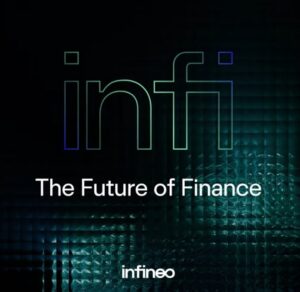
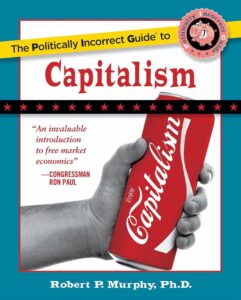
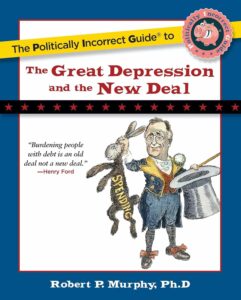
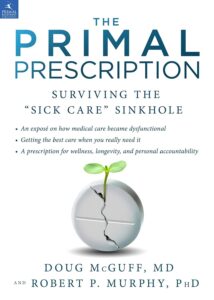
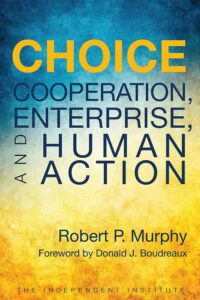

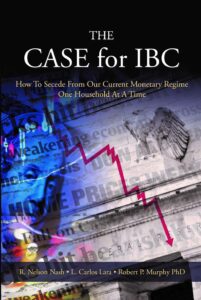
Recent Comments